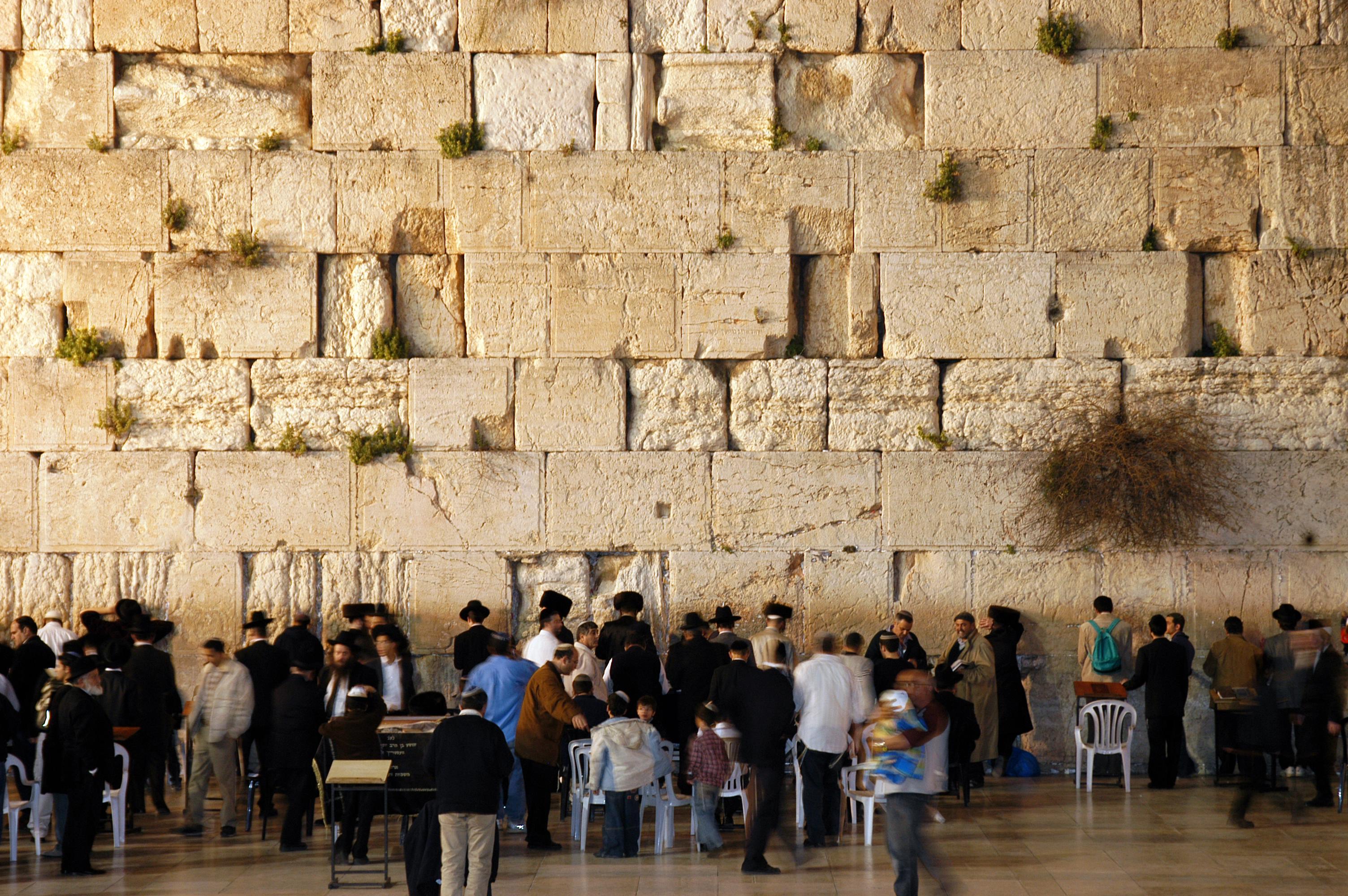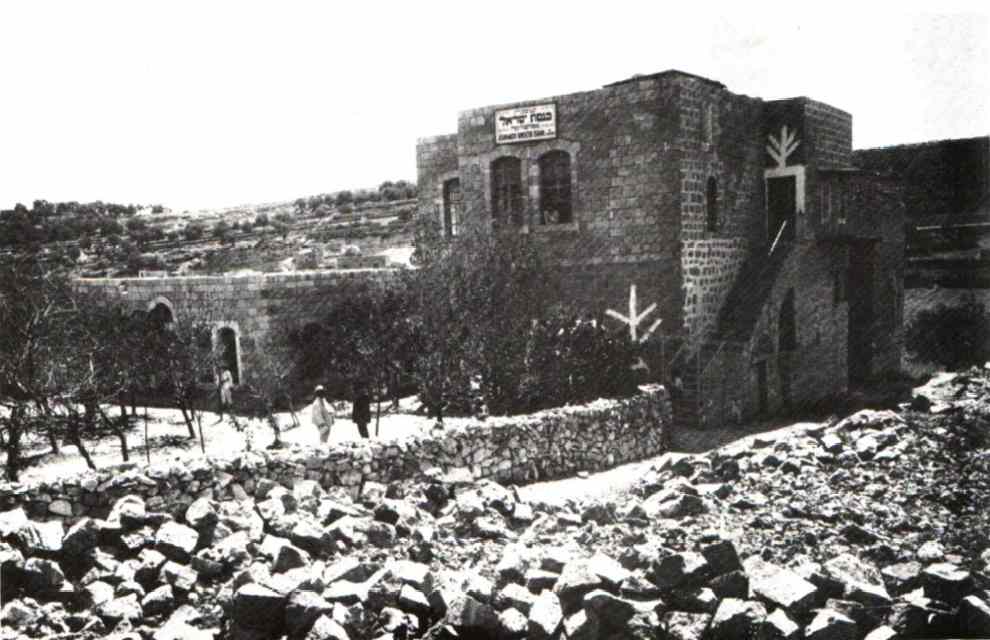|
Yitzhak Yosef
Yitzhak Yosef ( he, יצחק יוסף, born January 16, 1952) is the Sephardi Chief Rabbi of Israel (known as the Rishon LeZion), the rosh yeshiva of Yeshivat Hazon Ovadia, and the author of a set of books on ''halakha'' (Jewish law) called Yalkut Yosef. Yosef is the son of Ovadia Yosef, former Chief Rabbi of Israel, and bases his ''halakhic'' rulings on his father's methodology. His books are considered foundational among large sectors of Sephardic Jews in Israel and the world. For these books, he has won the Rabbi Toledano Prize from the Tel Aviv Religious Council, as well as the Rav Kook Prize. Biography Yitzhak Yosef was born in Jerusalem in 1952, the sixth son of the former Shas spiritual leader and Israeli Chief Rabbi, Ovadia Yosef. He attended school at Talmud Torah Yavneh in the Independent Education System. At age 12, he began his studies at the junior yeshiva of Porat Yosef in Katamon, Jerusalem. After that, he studied at Yeshivat HaNegev in Netivot, and from there ... [...More Info...] [...Related Items...] OR: [Wikipedia] [Google] [Baidu] |
Chief Rabbinate Of Israel
The Chief Rabbinate of Israel ( he, הָרַבָּנוּת הָרָאשִׁית לְיִשְׂרָאֵל, ''Ha-Rabbanut Ha-Rashit Li-Yisra'el'') is recognized by law as the supreme Rabbinic Judaism, rabbinic authority for Judaism in Israel. The Chief Rabbinate Council assists the two Chief Rabbis, who alternate in its presidency. It has legal and administrative authority to organize religious arrangements for Israel's Jews. It also responds to halakhic questions submitted by Jewish public bodies in the Jewish diaspora, Diaspora. The Council sets, guides, and supervises agencies within its authority. The Chief Rabbinate of Israel consists of two Chief Rabbis: an Ashkenazi Jews, Ashkenazi rabbi, and a Sephardi Jews, Sephardi rabbi; the latter also is known as the List of Sephardi chief rabbis of the Land of Israel, Rishon leZion. The Chief Rabbis are elected for 10-year terms. The present Sephardi Chief Rabbi is Yitzhak Yosef, and the Ashkenazi Chief Rabbi is David Lau, both of who ... [...More Info...] [...Related Items...] OR: [Wikipedia] [Google] [Baidu] |
Haaretz
''Haaretz'' ( , originally ''Ḥadshot Haaretz'' – , ) is an Israeli newspaper. It was founded in 1918, making it the longest running newspaper currently in print in Israel, and is now published in both Hebrew and English in the Berliner format. The English edition is published and sold together with the ''International New York Times''. Both Hebrew and English editions can be read on the internet. In North America, it is published as a weekly newspaper, combining articles from the Friday edition with a roundup from the rest of the week. It is considered Israel's newspaper of record. It is known for its left-wing and liberal stances on domestic and foreign issues. As of 2022, ''Haaretz'' has the third-largest circulation in Israel. It is widely read by international observers, especially in its English edition, and discussed in the international press. According to the Center for Research Libraries, among Israel's daily newspapers, "''Haaretz'' is considered the most infl ... [...More Info...] [...Related Items...] OR: [Wikipedia] [Google] [Baidu] |
Sanhedria Murhevet
Sanhedria HaMurhevet ( he, סנהדריה המורחבת, also spelled Sanhedria HaMurchevet) is a Haredi neighborhood in Jerusalem. Its name translates as "expanded Sanhedria". The neighborhood was founded in 1970 as a northern expansion of Sanhedria. The neighborhood is horseshoe-shaped. As of 2007 it has 784 residences. The neighborhood is closed to automobile traffic on Shabbat and Jewish holidays. Sanhedria Murhevet is home to Yeshivat Tiferet Zvi, Yeshiva Toras Moshe, Yeshiva Chofetz Chaim, the Jerusalem Kollel, and Kollel Meshech Chochma. The Har Hotzvim industrial complex and Yeshivat Horev are located nearby. Nahal Tzofim The neighborhood overlooks Nahal Tzofim which is a tributary of Nahal Sorek. The slope on the southern bank of Nahal Tzofim, which the neighborhood overlooks, is an open area with many terraces constructed during the Second Temple period, used for agriculture in antiquity. Other artifacts of antique agriculture, such as threshing-stones and cistern ... [...More Info...] [...Related Items...] OR: [Wikipedia] [Google] [Baidu] |
Yehuda Deri
Yehuda Deri is a rabbi, member of the Chief Rabbinical Council of Israel, and the Chief Rabbi of Beersheba Beersheba or Beer Sheva, officially Be'er-Sheva ( he, בְּאֵר שֶׁבַע, ''Bəʾēr Ševaʿ'', ; ar, بئر السبع, Biʾr as-Sabʿ, Well of the Oath or Well of the Seven), is the largest city in the Negev desert of southern Israel. ... since 1997. In 2013, he was a candidate for Chief Rabbi of Israel. He was also a past candidate for Chief Rabbi for Jerusalem and for Tel Aviv. He is a brother of Aryeh Deri. See also * Shlomo Deri References Sephardic Haredi rabbis in Israel Living people Year of birth missing (living people) Rabbis in Beersheba {{Israel-rabbi-stub ... [...More Info...] [...Related Items...] OR: [Wikipedia] [Google] [Baidu] |
History Of Responsa In Judaism
The history of '' responsa'' in Judaism (Hebrew: שאלות ותשובות; Sephardic: ''She'elot Utshuvot''; Ashkenazic: ''Sheilos Utshuvos;'', usually shortened to שו"ת Shu"t ), spans a period of 1,700 years. Rabbinic responsa constitute a special class of rabbinic literature, differing in ''form'', but not necessarily in content, from Rabbinic commentaries devoted to the exegesis of the Bible, the Mishnah, the Talmud, and ''halakha'' (the codes of Jewish religious law). The codes themselves contain the rules for ordinary incidents of life. The responsa literature covers all these topics and more.Jewish Encyclopedia bibliography: ''Responsal literature as a whole has as yet found no literary historian; single periods have been discussed while others have been entirely neglected, the works on these separate epochs including: Joel Müller, ''Briefe und Responsen aus der Vorgaonäischen Jüdischen Literatur'', Berlin, 1886; idem, ''Einleitung in die Responsen der Babylonischen ... [...More Info...] [...Related Items...] OR: [Wikipedia] [Google] [Baidu] |
Halakha
''Halakha'' (; he, הֲלָכָה, ), also transliterated as ''halacha'', ''halakhah'', and ''halocho'' ( ), is the collective body of Jewish religious laws which is derived from the written and Oral Torah. Halakha is based on biblical commandments ('' mitzvot''), subsequent Talmudic and rabbinic laws, and the customs and traditions which were compiled in the many books such as the ''Shulchan Aruch''. ''Halakha'' is often translated as "Jewish law", although a more literal translation of it might be "the way to behave" or "the way of walking". The word is derived from the root which means "to behave" (also "to go" or "to walk"). ''Halakha'' not only guides religious practices and beliefs, it also guides numerous aspects of day-to-day life. Historically, in the Jewish diaspora, ''halakha'' served many Jewish communities as an enforceable avenue of law – both civil and religious, since no differentiation of them exists in classical Judaism. Since the Jewish Enlightenment (''Hask ... [...More Info...] [...Related Items...] OR: [Wikipedia] [Google] [Baidu] |
Hebron Yeshiva
Hebron Yeshiva, also known as ''Yeshivas Hevron'', or Knesses Yisroel, is a yeshiva devoted to high-level study of the Talmud. It originated in 1924 when the roshei yeshiva and 150 students of the Slabodka Yeshiva, known colloquially as the "mother of yeshivas", relocated to Hebron. Relocation of Slabodka Yeshiva to Palestine A 1924 edict requiring enlistment in the military or supplementary secular studies in the yeshiva led a large number of students in the Slabodka yeshiva to relocate to the Land of Israel, at that time Palestine under the British mandate. Rabbi Nosson Tzvi Finkel, also known as "Der Alter fun Slabodka" (''The Elder of Slabodka''), sent Rabbi Avraham Grodzinski to head this group and establish the yeshiva in Hebron. Upon Grodzinski's return to Slabodka, the Alter transferred the ''mashgiach ruchani'' responsibilities to him, and the ''rosh yeshiva'' duties to Rabbi Yitzchok Isaac Sher, and he moved to Hebron to lead the yeshiva there together with Rabbi Mosh ... [...More Info...] [...Related Items...] OR: [Wikipedia] [Google] [Baidu] |
Netivot
Netivot ( he, נְתִיבוֹת, "''paths''", ar, نتيڤوت) is a city in the Southern District of Israel located between Beersheba and Gaza. In , it had a population of . History Netivot was founded in 1956 and named after the bible: "All her paths are peace." (Proverbs 3:17) Initially a ma'abara, it was later transformed into a development town. The first residents were immigrants from Morocco and Tunisia. In the 1990s, they were joined by immigrants from Russia and Ethiopia. For many years, Netivot suffered from high unemployment. Since 2008, Netivot has been the target of Grad missile attacks from Gaza. In 2012, a rocket exploded near a school in the city. A major landmark is the tomb of the Baba Sali (1889–1984), a Moroccan-born kabbalist who is buried there. Demographics In 2001, the ethnic make-up of the city was 99.9% Jewish, with no significant Arab population, and the population was evenly divided between males and females. The city ranked relatively low ... [...More Info...] [...Related Items...] OR: [Wikipedia] [Google] [Baidu] |
Yeshivat HaNegev
A yeshiva (; he, ישיבה, , sitting; pl. , or ) is a traditional Jewish education, Jewish educational institution focused on the study of Rabbinic literature, primarily the Talmud and halacha (Jewish law), while Torah and Jewish philosophy are studied in parallel. The studying is usually done through daily ''Shiur (Torah), shiurim'' (lectures or classes) as well as in study pairs called ''chavrusas'' (Aramaic language, Aramaic for 'friendship' or 'companionship'). ''Chavrusa''-style learning is one of the unique features of the yeshiva. In the United States and Israel, different levels of yeshiva education have different names. In the United States, elementary-school students enroll in a ''cheder'', post-Bar and Bat Mitzvah, bar mitzvah-age students learn in a ''mesivta, metivta'', and undergraduate-level students learn in a ''Beth midrash, beit midrash'' or ''yeshiva gedola'' ( he, ישיבה גדולה, , large yeshiva' or 'great yeshiva). In Israel, elementary-s ... [...More Info...] [...Related Items...] OR: [Wikipedia] [Google] [Baidu] |
Katamon
, settlement_type = Neighborhood of Jerusalem , image_skyline = בית רה"מ לוי אשכול ברחוב בוסתנאי 3 בשכנות קטמון בירושלים.jpg , imagesize = 300px , image_caption = House of Levi Eshkol , subdivision_type = Country , subdivision_name = , subdivision_type1 = District , subdivision_name1 = Jerusalem District , subdivision_type2 = City , subdivision_name2 = Jerusalem , population_footnotes = , population_as_of = 2017 , population_total = 5,980 , area_code_type = Area code Katamon or Qatamon ( ar, قطمون ''Katamun'', he, קטמון, el, Καταμώνας ''Katamónas'') is a neighborhood in south-central Jerusalem. The official Hebrew name, Gonen (), is mainly used in municipal publications. Katamon is derived from the Greek κατὰ τῷ μοναστηρίῳ ("by the monastery"). The neighborhood is built next to an old Greek Orthodox monastery, believe ... [...More Info...] [...Related Items...] OR: [Wikipedia] [Google] [Baidu] |
Porat Yosef Yeshiva
Porat Yosef Yeshiva ( he, ישיבת פורת יוסף) is a Sephardic yeshiva in Jerusalem, with locations in both the Old City and the Geula neighborhood. The name Porat Yosef means "Joseph is a fruitful tree" after the biblical verse Genesis 49:22. History Yeshivat Ohel Moed, cofounded by Rabbis Ezra Harari-Raful and Refael Shelomo Laniado in Jerusalem in 1904, was the forerunner to Porat Yosef Yeshiva. Harari-Raful also opened another yeshiva in 1918 that merged with Porat Yosef in 1923. The cornerstone for Porat Yosef Yeshiva was laid in Jerusalem's Old City in 1914. Yosef Shalom, a Baghdadi philanthropist from Calcutta, India, originally bought the site overlooking the Temple Mount with the intention of building a hospital. When he wrote to the Ben Ish Chai of Baghdad for his opinion, the sage persuaded him to endow a yeshiva instead. Construction was delayed, however, due to World War I; the yeshiva was finally inaugurated in 1923. The sprawling campus consisted of ... [...More Info...] [...Related Items...] OR: [Wikipedia] [Google] [Baidu] |

_DAILY_OF_THE_EARLY_20S.jpg)



